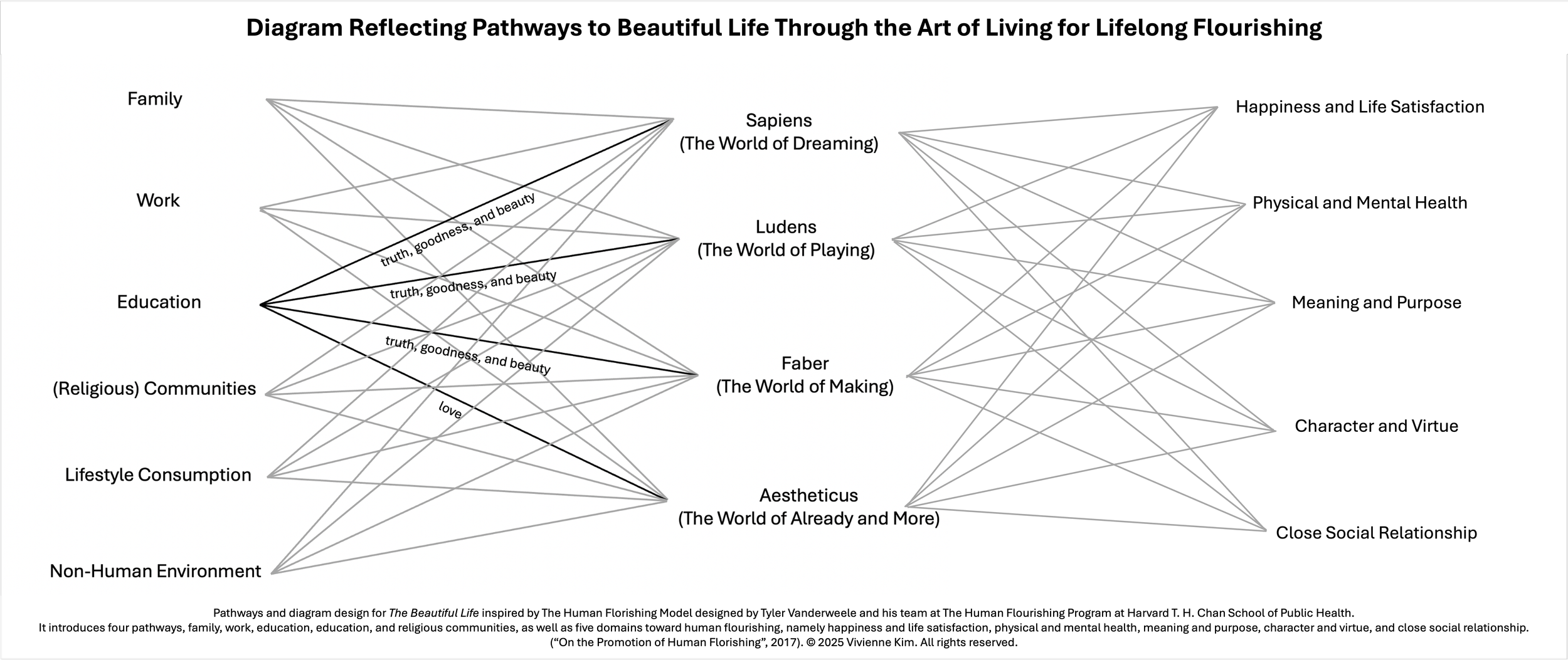Elegance in Medicine
The art of living is essential to understanding the patterns of The Beautiful Life—a model of human flourishing shaped by ongoing studies in culture-specific well-being, happiness, the good life, sustainable development goals, and human rights. This model seeks not only to interpret but also to enliven these visions within people’s lived journeys. Recognizing that human dignity lies at the intersection of multilateral tensions (social, economic, environmental, and health-related), this study illuminates a holistic view of individuals’ everyday experiences—from life’s darkest moments to their most splendid—as they strive toward these aspirational ideals.
Normative models of well-being—often centered on individual self-realization—have been institutionalized and materialized, shaping public consciousness and collective perceptions. These models, sometimes reinforce stereotypes about life’s values and social groups. Reimagined as an actionable and immediate reality—rather than a distant ideal—The Beautiful Life expands existing paradigms through a more holistic and nuanced lens on human flourishing. It seeks to unveil a societal narrative rooted in lived experiences of beauty and dignity—one that honors and restores social esteem for undervalued vocations, sociocultural groups, and the various stages or seasons of life.
In medical environments, the art of living opens windows into both the patient’s contextualized theory of healing and the physician’s evolving professional identity. A physician’s aesthetic appreciation of the self—and of the inherent dignity of their vocation—forms the foundation for recognizing and honoring the dignity of their patients and supporting their lifelong flourishing.
This approach introduces comparative aesthetic ethics, an immersive ethical model at the heart of The Beautiful Life framework. It understands aesthetic consciousness as an expression of the ethos of elegance—realized through the cultivation of mutual flourishing and grounded in aesthetic humility and patience. This framework anticipates the emergence of homo aestheticus—the beautiful human—who contributes to the flourishing of our interconnected worlds.
Along with the conceptual development of The Beautiful Life, Vivienne is currently making hands-on-tools such as below to mitigate multilateral violence and cultivate cultural peace in medicine:
Patient’s Life in Appreciation Questions – A six-domain reflective tool to understand the patient’s agency and the dignity of the healing journey holistically.
Physician’s Life in Appreciation Questions – A six-domain reflective tool promoting the dignity of vocation and the physician’s lifelong flourishing.

